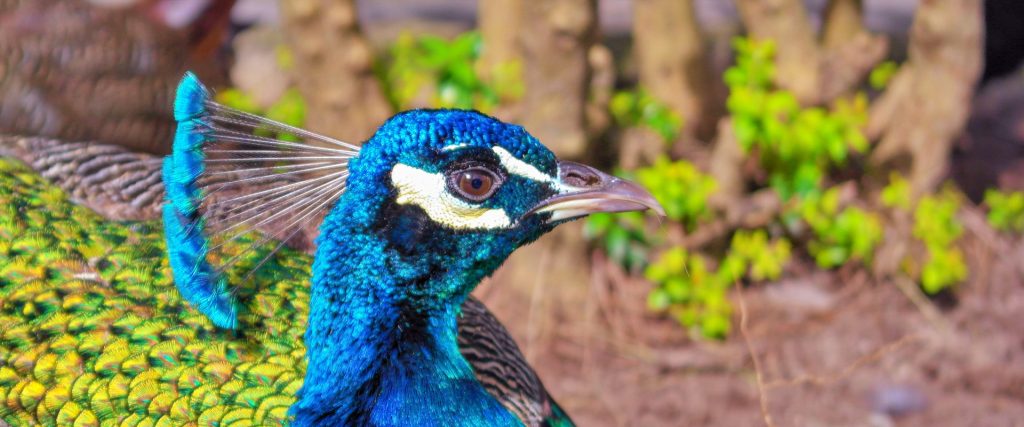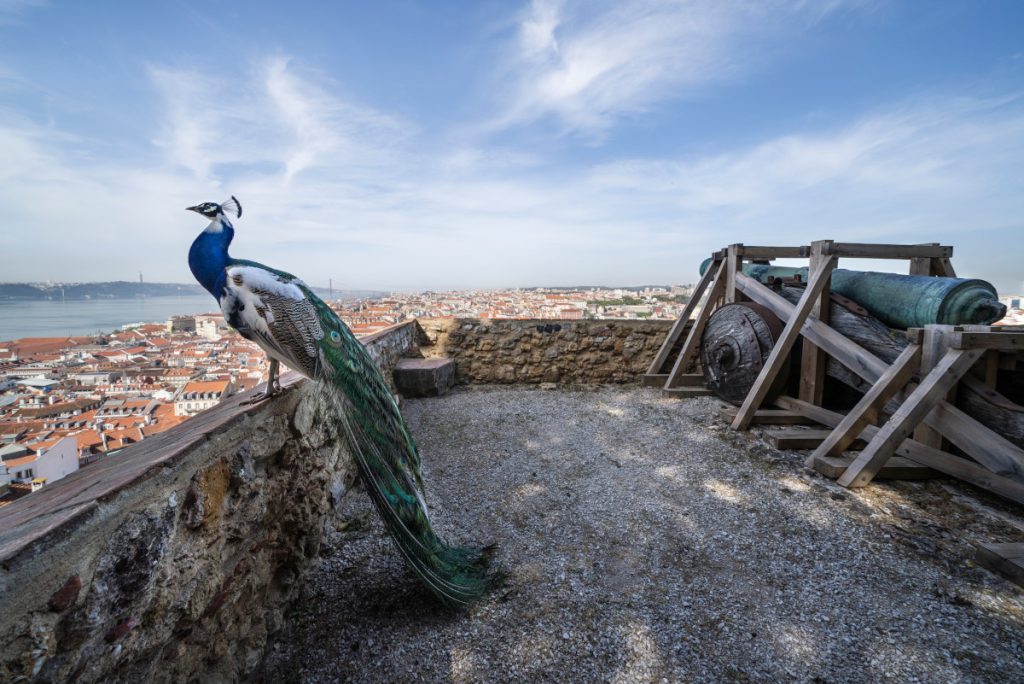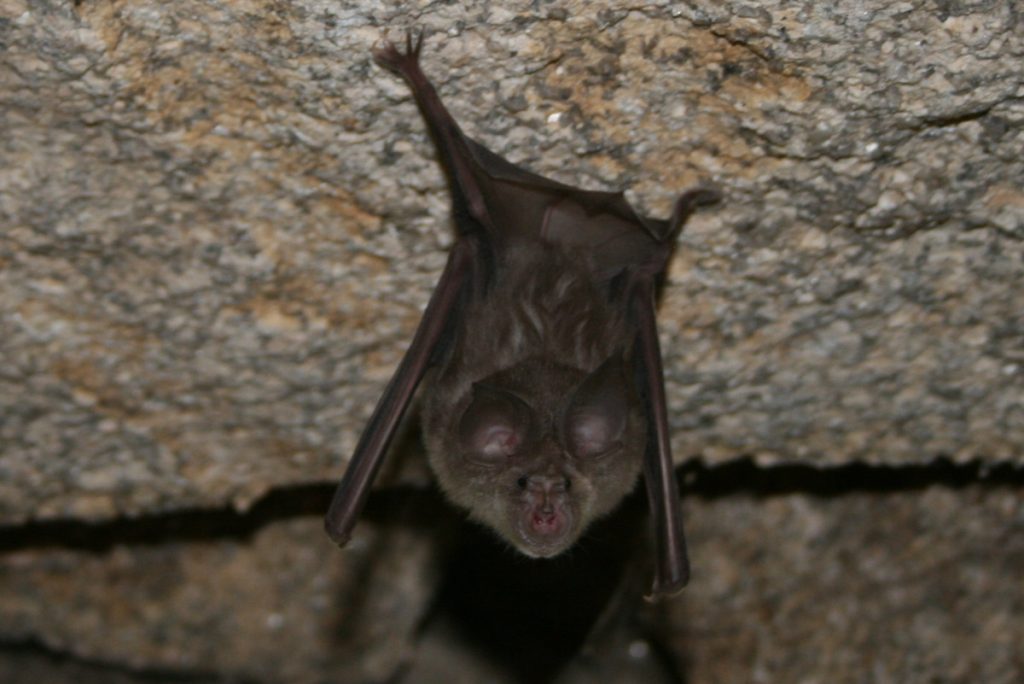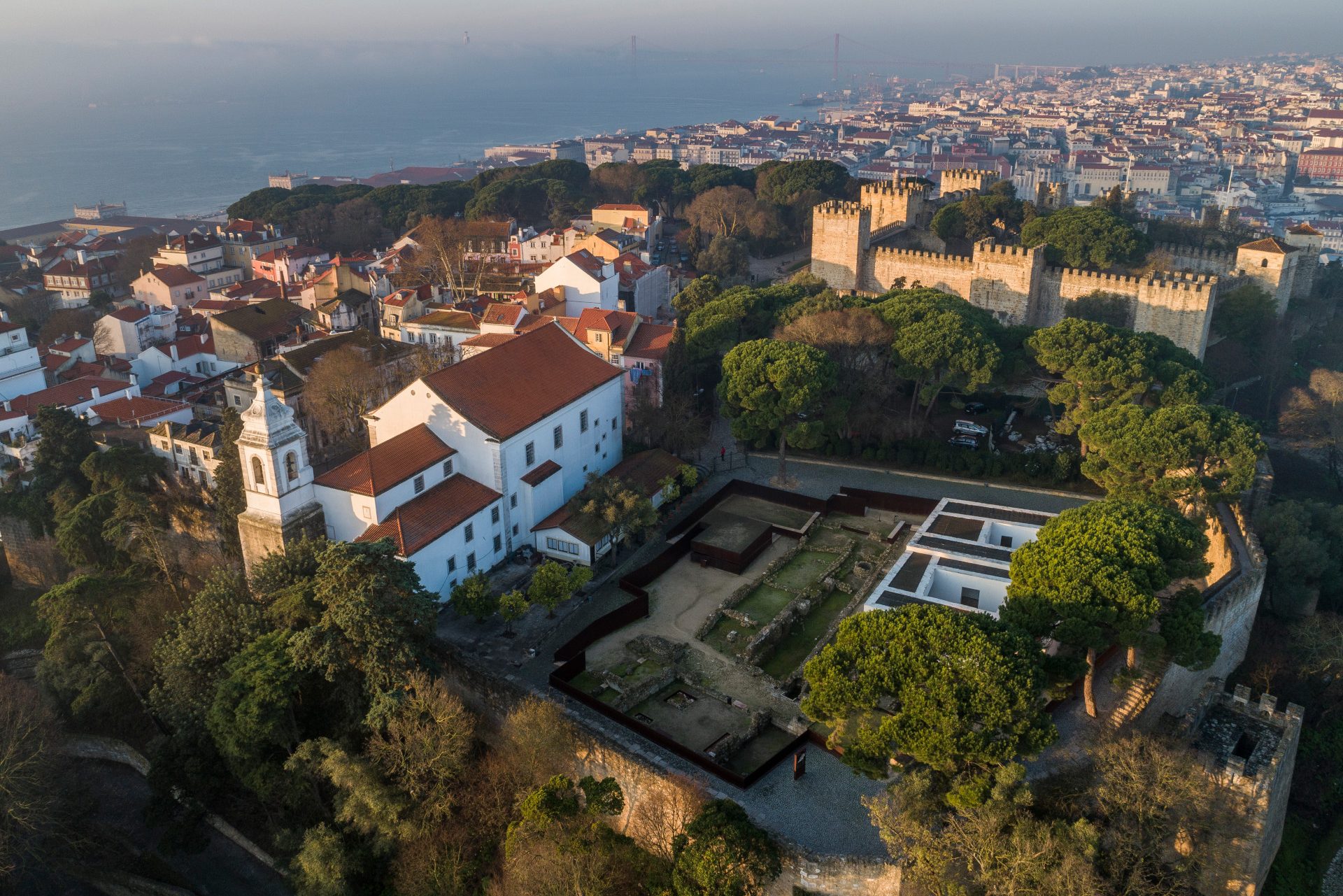Fauna

Castelo de S. Jorge is the habitat and refuge of many faunal species such as birds that seek out this high place, populated with Mediterranean vegetation, sunny, peaceful and with a good air, to nest but also other animals of which we highlight the bats.
Castelo de S. Jorge, with the aim of developing educational strategies and raising awareness with the participation of the general public, promotes, throughout the year, visits, workshops and conferences to increase knowledge, dissemination and appreciation of the species that inhabit here.

The domestic pigeon, the blackbird, the turtle dove, the sparrow, the collared parakeet and the great tit fly above the castle.
But it is the Indian peacock, the pavu cristatus (an exotic species whose males have a bright blue neck and an extraordinarily beautiful fan that they use for mating rituals) that is the most abundant species.
Originating in India, where they are worshipped, peacocks were (and are) prized in Europe as an exotic bird and have featured in royal and noble zoological collections down the centuries.
Peacocks live, sleep and mate in the immense stone pines and bushes that are dotted around the landscape.
This group of peacocks, which grows every year, currently numbers around 40 individuals who are monitored by a team of scientists throughout the year. Counts, check-ups, analyses and deworming are carried out regularly and microchips are placed in all the chicks which are born between April and May.
The topic of food is extremely important. We know that in the wild peacocks eat small insects, fruits and seeds. For these animals that live in semi-captivity, scientists have designed an appropriate diet so that these species remain in the best possible health.
It is very important that the peacocks are not fed human food, as it is unhealthy and can even cause premature death.
For all those who want to feed these animals, smalls packets of appropriate food for peacocks and their chicks can be bought for a nominal price at the Castelo de S. Jorge shop.
Help us look after our natural heritage!

Dusk at Castelo de S. Jorge sees several species of bats fly over the walls, towers, barbican and moat.
Bats play an important role in pest and disease control, as they consume large numbers of flying insects, some of which cause damage to agriculture and forests, while others spread disease. These animals are essential for well-functioning ecosystems.
Accompanied by biologists from Biota and with the help of an ultrasound detector, take part in a night-time visit and demystify the myths and legends associated with these animals.
Species present at the Castelo de S. Jorge:
The lesser horseshoe bat (Rhinolophus hiposideros), an endangered (vulnerable), cave-dwelling species that can be found in mines and caves, but also in abandoned buildings. It feeds on small nocturnal insects (mosquitoes and butterflies) that it catches in flight in forested areas.
The common pipistrelle (Pipistrellus pipistrellus) is a species which shelters in cracks in buildings or under roof tiles, but which can also be found on bridges, in mines and caves or cracks in trees. It feeds on all kinds of nocturnal insects, which it often hunts around lampposts.
The soprano pipistrelle (Pipistrellus pygmeus) forms colonies of a few hundred or thousands of individuals that take shelter in buildings. It can also occupy nest boxes, hollows in trees, bridges and rock crevices. It feeds mainly on aquatic insects that it catches in flight on or around water.
The grey long-eared bat (Plecotus austriacus) is a species that mainly shelters in cracks in buildings. It mostly feeds on nocturnal butterflies that it hunts in flight in valleys and plains, agricultural areas and meadows.
The common bent-wing bat (Miniopterus schreibersii) is an endangered (vulnerable), cave-dwelling bat that lives in colonies and hibernates in caves, mines and tunnels. It feeds on nocturnal butterflies that it hunts close to its shelter, in open areas, including urban areas and around water.
The European free-tailed bat (Tadarida teniotis) is a species that shelters in cracks on escarpments, bridges, caves or on the façades of buildings. It feeds on nocturnal butterflies that it hunts in flight over forests, cities, agricultural areas and bodies of water. It generally hunts flying high up, at an altitude of 10 to 300m and can reach speeds of 65 km/h.
